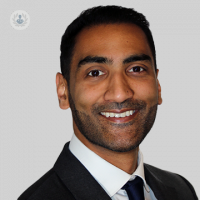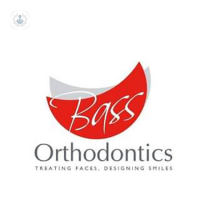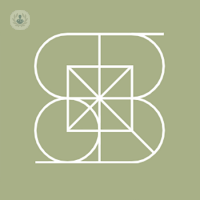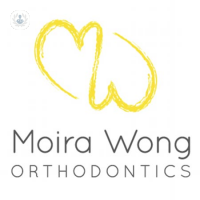What are braces?
Braces, or dental brackets, are a type of orthodontic treatment to help correct the positioning of your teeth and sometimes your jaw. They can be single or multiple pieces either fixed around your teeth or easily removable. Thanks to the latest advances in cosmetic dentistry, braces can come in various types: metal (traditional), self-ligating or transparent (ceramic).

Why are they used?
Braces are used by orthodontists to correct problems with the teeth and jaw. Typical problems include:
- Overcrowding
- Crooked teeth
- Overbite
- Underbite
- Jaw misalignment problems
What are the different types of braces?
- Fixed traditional braces — these are formed of high-grade stainless steel and are accompanied by metal arches, elastic bands and a flexible wire that connects all the brackets and bands.
- Self-ligating braces — these are an evolution of traditional metal braces. Instead of using elastic bands, these use clips to hold the wire in place.
- Lingual or transparent braces — some people only need minor corrections, so they can use clear, removable appliances, often called clear aligners or invisible braces. These need to be replaced every one to three weeks with a new set. They shouldn’t be worn when eating, brushing or flossing.
What is the best age to have braces?
The ideal age of treatment ranges from age nine upwards and this is dependent on the diagnosis of the malocclusion.
What can I expect if I get braces?
Treatment is normally done in three phases: the placement of the braces, the periodic adjustments and then the use of a retainer.
You will need to return periodically to see your orthodontist so they can adjust your braces by either tightening wires or replacing a set of clear aligners. All of this puts pressure on the teeth and slowly shifts them into their new position. If your orthodontist needs to realign your jaw, they will apply tension using elastic bands stretched between opposing teeth. You should expect your teeth and jaw to feel slightly sore for a few days after each adjustment.
What happens when I have my braces removed?
When you have your braces removed, you will need to wear a retainer for a short period to help keep your teeth in place and prevent them from moving back to their original position. These are typically made of plastic, but can sometimes be made of both plastic and metal wires.
How long do I need to wear braces?
Adults can expect to wear braces for one to three years, depending on the severity of the condition. Children tend to wear braces for 18 months to two years and visits to the orthodontist are needed every six to eight weeks.
08-02-2016 01-26-2024Braces
What are braces?
Braces, or dental brackets, are a type of orthodontic treatment to help correct the positioning of your teeth and sometimes your jaw. They can be single or multiple pieces either fixed around your teeth or easily removable. Thanks to the latest advances in cosmetic dentistry, braces can come in various types: metal (traditional), self-ligating or transparent (ceramic).

Why are they used?
Braces are used by orthodontists to correct problems with the teeth and jaw. Typical problems include:
- Overcrowding
- Crooked teeth
- Overbite
- Underbite
- Jaw misalignment problems
What are the different types of braces?
- Fixed traditional braces — these are formed of high-grade stainless steel and are accompanied by metal arches, elastic bands and a flexible wire that connects all the brackets and bands.
- Self-ligating braces — these are an evolution of traditional metal braces. Instead of using elastic bands, these use clips to hold the wire in place.
- Lingual or transparent braces — some people only need minor corrections, so they can use clear, removable appliances, often called clear aligners or invisible braces. These need to be replaced every one to three weeks with a new set. They shouldn’t be worn when eating, brushing or flossing.
What is the best age to have braces?
The ideal age of treatment ranges from age nine upwards and this is dependent on the diagnosis of the malocclusion.
What can I expect if I get braces?
Treatment is normally done in three phases: the placement of the braces, the periodic adjustments and then the use of a retainer.
You will need to return periodically to see your orthodontist so they can adjust your braces by either tightening wires or replacing a set of clear aligners. All of this puts pressure on the teeth and slowly shifts them into their new position. If your orthodontist needs to realign your jaw, they will apply tension using elastic bands stretched between opposing teeth. You should expect your teeth and jaw to feel slightly sore for a few days after each adjustment.
What happens when I have my braces removed?
When you have your braces removed, you will need to wear a retainer for a short period to help keep your teeth in place and prevent them from moving back to their original position. These are typically made of plastic, but can sometimes be made of both plastic and metal wires.
How long do I need to wear braces?
Adults can expect to wear braces for one to three years, depending on the severity of the condition. Children tend to wear braces for 18 months to two years and visits to the orthodontist are needed every six to eight weeks.
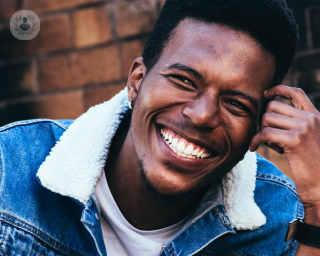

The ABC approach: a minimally invasive alternative to achieve a radiant smile
By Dr Biju Krishnan
2024-11-20
The ABC approach is a progressive strategy to smile design allowing you to undergo a minimally invasive treatment plan to achieve your desired smile. Dr Biju Krishnan, an award-winning cosmetic dentist from London explains how he treated one of previous patients using this effective alternative without taking an invasive restorative approach. See more


How do I know if my child needs braces?
By Dr Moira Wong
2024-11-20
Wondering if your child needs braces? Dr Moira Wong, a leading London orthodontist, shares her specialist knowledge to guide you on recognising if your child needs braces to prevent or lessen teeth irregularities. See more
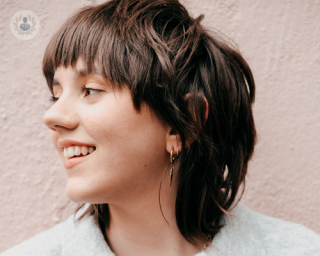

All about the CFast system
By Dr Biju Krishnan
2024-11-20
CFast, which stands for Cosmetically Focused Adult Straight Teeth, is an innovative orthodontic treatment designed specifically for adults. Find out all about it from its founder, and cosmetic dentist at the One To One Dental Clinic, Dr Biju Krishnan. See more
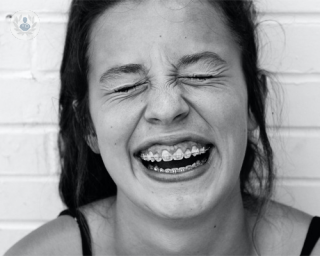

Kids’ braces FAQs: types, when to get them, and more
By Dr Elif Keser
2024-11-20
Braces are an essential treatment for many children to ensure that their teeth and jaw develop in a way that minimises their risk of future problems. As parents, it can be difficult to know what types are available, when to get them, or what the prices of braces are based on. Dr Elif Keser answers these very frequent questions that parents have regarding their child’s braces. See more
Experts in Braces
-
Dr Moira Wong
OrthodonticsExpert in:
- Orthodontics
- Aesthetic orthodontics
- Braces
- Paediatric orthodontics
- Interceptive orthodontics
- Malocclusion
-
Dr Dipen Patel
DentistryExpert in:
- Orthodontics
- Lingual braces
- Invisalign
- Prosthetic ceramic / zirconium
- Braces
- Teeth whitening
-
Dr Anton Bass
OrthodonticsExpert in:
- Braces
- Orthodontics
- Paediatric orthodontics
- Invisible braces
- Aesthetic orthodontics
- Interceptive orthodontics
-
Dr Brian Dunne
OrthodonticsExpert in:
- Orthodontics
- Invisalign
- Braces
- Lingual braces
- Damon braces
- Invisible braces
-
Dr Bhavin Soneji
OrthodonticsExpert in:
- Orthodontics
- Invisalign
- Aesthetic orthodontics
- Smile design
- Temporomandibular joint disorder (TMJ)
- Braces
- See all

Bass Orthodontics
Bass Orthodontics
4 Queen Anne St, London W1G 9LQ
No existe teléfono en el centro.
By using the telephone number provided by TOP DOCTORS, you automatically agree to let us use your phone number for statistical and commercial purposes. For further information, read our Privacy Policy
Top Doctors

Serio Dental
Serio Dental
130 Chamberlayne Road, NW10 3JR
No existe teléfono en el centro.
By using the telephone number provided by TOP DOCTORS, you automatically agree to let us use your phone number for statistical and commercial purposes. For further information, read our Privacy Policy
Top Doctors

Moira Wong Orthodontics
Moira Wong Orthodontics
27A Kensington Church Street, London
No existe teléfono en el centro.
By using the telephone number provided by TOP DOCTORS, you automatically agree to let us use your phone number for statistical and commercial purposes. For further information, read our Privacy Policy
Top Doctors
-
Bass Orthodontics
4 Queen Anne St, London W1G 9LQ, Central LondonExpert in:
- Braces
- Invisalign®
- Orthodontics
- Invisible braces
- Orthodontics (children)
- Dental therapy
-
Serio Dental
130 Chamberlayne Road, NW10 3JR, North LondonExpert in:
- Routine and hygiene care for adults and children
- Dental Implants (replacing teeth)
- Cosmetic dentistry
- Complex restorative dentistry
- Orthodontics
- Periodontics (gum problems)
-
Moira Wong Orthodontics
27A Kensington Church Street, London, Central LondonExpert in:
- Maxillofacial surgery
- Oral surgery
- Fillings
- Cosmetic dentistry
- Dental check up (adults)
- Dental check up (children)
- See all
- Most viewed diseases, medical tests, and treatments
- Botulinum toxin (Botox™)
- Platelet-rich plasma
- Cleft palate
- Tooth wear
- Tooth sensitivity
- Tooth abscess
- Facial pain
- Dental phobia
- Dental monitoring
- Extraction of teeth

